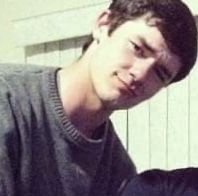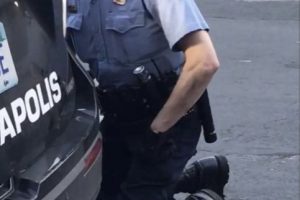Victoria Price and Ruby Bates

Picture: Victoria Price and Ruby Bates
Additional Picture 1: Victoria Price and Ruby Bates During Time of Accusation
Additional Picture 2: The Scottsboro Boys
a.k.a.
Rape Accusers, Scottsboro Accusers, Southern Gems, She-Devils, Pure Garbage, Worst Kind of TrashD.O.B./Age:
VP: 1911 RB: 1915Location:
Chattanooga & Memphis, Tennessee | Paint Rock & Scottsboro, Alabama (America)Snitch Biography:
This case I'm going to get into is extremely depressing and controversial and it sheds light on the faulty incarceration practices of America's justice system. With that disclaimer said, The Scottsboro Boys were nine African American teenagers, ages 13 to 20, falsely accused in Alabama of raping two White American women on a train in 1931. The two women were identified as at the time, 21 year old Victoria Price and 17 year old Ruby Bates. The landmark set of legal cases from this incident dealt with racism and the right to a fair trial. The cases included a lynch mob before the suspects had been indicted, all-white juries, rushed trials, and disruptive mobs. It is commonly cited as an example of a miscarriage of justice in the United States legal system.So lets detail what happened clearly:
In the early 1930s amidst The Great Depression, people were illegally riding freight trains in hopes of finding work, this act was known as "hoboing". On March 25th, 1931, aboard a train travelling between Chattanooga and Memphis, Tennessee were an equal mix of African American and Caucasian American youth. A fight broke out between the white and black groups and the whites were kicked off the train. Basically, A group of white teenage boys saw 18-year-old Haywood Patterson on the train and attempted to push him off the train, claiming that it was "a white man's train". A group of whites gathered rocks and attempted to force all of the black men from the train. Patterson and the other black passengers were able to ward off the group. The humiliated white teenagers jumped or were forced off the train. After that the young white men reported to the nearest station master, who reported to the nearest sheriff's office that they had been attacked by a group of black teenagers, "an assault by a gang of blacks". The station master was ordered to stop the train and he did. The train stopped at Paint Rock, Alabama. The sheriff than organized a group of people who stopped and searched the train at Paint Rock, Alabama and arrested all the African Americans they can find.
Here nine black youth were stopped by dozens of armed men and were taken to Scottsboro Jail. Among-st those on the train originally were the African American youth who were arrested later on, the White American youth who reported the black youth and surprisingly were two white women. These two girls were identified as, 21 year old Victoria Price and 17 year old Ruby Bates. Out of fear for being charged with vagrancy for their failure to purchase a train ticket, the two women accused the African American prisoners of rape.
All nine of the Scottsboro boys were identified as follows:
1. Clarence Norris (Age: 19)
2. Andy Wright (Age: 19; Brother of Leroy Wright)
3. Haywood Patterson (Age: 18)
4. Olen Montgomery (Age: 17)
5. Willie Roberson (Age: 16)
6. Ozie Powell (Age: 16)
7. Charles Weems (Age: 16)
8. Eugene Williams (Age: 15)
9. Leroy "Roy" Wright (Age: 13; Brother of Andy Wright)
These men were later recognized as the Scottsboro boys. They were trialed on April 2, 1931 for Victoria Price and Ruby Bate's accusations of rape. Again, you can't understand unless you got the context of the Great Depression, especially in areas with Jim Crow. You have folks riding the rails looking for work, because they cannot afford anything. What happens in the Scottsboro case is you have nine black teenagers, and some of them get into a fight on a train with a couple of white guys. The train stops in Paint Rock/Scottsboro, a Jim Crow regulated town. As they get off the train, with the sheriff's folks there, the white guys get off, the black guys get off... and then two white women get off. Than the town's folk are looking at each-other like something suspicious must have happened. Than you look at it through the spectrum of white men's perspective of black men and white women in Alabama during the early 1930s, its a recipe for disaster; and than the women put the nail in the coffin by yelling, "Rape!".
The Trails:
The trails of Clarence Norris and Charles Weems would be the first on April 6th, 1931, only 12 days following the boys arrest. During the jury's deliberation, who were all a lynching-mob of southern white men, the second trial was already underway. The first jury deliberated less than two hours before returning with a guilty verdict and imposing the death sentence on both Norris and Weems. The courtroom erupted in loud excitement, one that can be heard for the second jury for the following trial of Haywood Patterson. The jury quickly convicted Patterson and recommended death by electric chair. The next trial commenced within minutes of the second trial ending once again with the death penalty for five of the boys. The only person without a death sentence would be Leroy Wright, the youngest boy at age 13. Wright's trial was declared a hung jury meaning the jury couldn't agree on a verdict after extensive deliberation. The jury concluded Wright's guilt however, punishment could not be agreed on; and consequently the court was forced to declare a mistrial. In 3 days time, 8 of the 9 boys, all under age 21, 4 under age 18, and 2 under age 16 were heard through trials surrounded by white hatred and prejudice (Klu Klux Klan and lynch mobs) and sentenced to be killed at the electric chair at the earliest possible moment permitted by the law.
Judicial Bias:
Not only was the courtroom judge, Judge Alfred E. Hawkins, described as "one big smiling white face", but notably according to the defendant Clarence Norris, "He let it be known that we were guilty and that a trial was a waste of time and money". As mentioned for each trial all white juries were selected. There were very few African Americans in the jury pool as most have already been disenfranchised because of discriminatory practices by White Americans and were therefore disqualified from jury duty.
The judge had ordered the Alabama bar to assist the defendants and the only attorney who volunteered was a 69 year old, who hadn't defended a case in decades named, Milo Moody. Alongside Moody was Steve Roddy, a Chattanooga-based real estate lawyer whom the judge persuaded to assist Moody. Roddy later admitted that he had not had the time to prepare and was not familiar with criminal law. Moody was frequently prone to forgetfulness and Roddy was often drunk. The defense lawyers quickly demonstrated their ineffectiveness in several ways. They expressed the willingness to have all nine boys to be trailed together despite the prejudice the trail might cause to Roy Wright. The prosecution feared that a single trial might constitute to "reversible error", the gravity to reverse the conviction, and decided to try the boys in pairs. The defense offered only the defendants themselves as witnesses and their testimonies were incoherent. Due to this a local editorialist described the states case as "almost perfect".
A lynching mob served as the judge, jury and executioner of prosecuted individuals primarily African Americans. The most common charges that lead to lynching during the period were murder and rape. With that bieng said, no white men got lynched for raping a black women but many black men got lynched for allegedly raping white women. In the Scottsboro case when the nine black men were accused of raping the two white women, the case was tried solely on the basis of the rape accuser's testimony.
Perjured Testimony of Victoria Price and Ruby Bates:
Since the prosecution's testimony relied on Victoria Price's accounts, she was often evasive in her answers, pretending not to understand the question or flat out lied, otherwise known as perjured testimony. The defense tried to cast doubt upon Price's credibility by mentioning her previous work as a prostitute, which she denied however she lied about that too. She would generally crack jokes on the stand and try to divert the jury's topic of conversation.
Ruby Bates, however, was considered a weak witness. This was due to the fact that her testimony didn't fit with the boy's identities and the account of events as told by Price on the stand. The minutes of the trial show that Price was the only alleged eye-witness of the group on the train that testified at great length leading the prosecution the considered the boys were wrongfully convicted.
The Expert Testimony:
Doctor R. Bridges discovered that Bates had only a few scratches on her and was not lacerated at all. He also claimed that no blood was found on either victim and was particularly upset when asked if either had been raped . The best that he could offer is that it was possible. Doctor Marvin Lynch who also testified the girls, determined that he could not find evidence of internal violence resulting from rape.
Clarence Norris Turns On The Group:
At this point I'm really furious when writing this account. When on the stand, almost all the boys denied taking part of the crime. However, Clarence Norris, the eldest of the group, claimed out of fear that everyone of them had something to do with the girls before kicking the white boys off the train. He claimed a gang-rape took place, but he was the only one not involved. Norris later testified that he was scared they would kill them and didn't know what he said. This is common in policing, its called getting a false confession illicit-ed by intimidation tactics, coercion and aggressive police. Norris' confession was coerced by pressure through physical, societal and psychological pressures.
Path to Justice:
The Communist Party and the N.A.A.C.P soon took interest in the Scottsboro case. They appealed the case to the U.S Supreme Court in November 1932. The case overrode Alabama's decision and gave new trials to all of the boys. It was ruled that the boys were not given adequate or fair counsel. Haywood Patterson was given a new trial and was again found guilty and sentenced to death. In 1935, the defense appealed to the U.S Supreme Court who once again overthrew the convictions under the ground the there were no African Americans within the jury pool. Alabama was forced to include black citizens when retrials happened so the jury pool was all White American men and one African American man. Eventually in 1937, majority of the Scottsboro boys had their charges dropped, after already spending 6 years in prison.
The Fate of the Scottsboro Boys:
1. Willie Roberson - Pardoned July 24th, 1937, after serving 6 years in prison. Sought and achieved complete anonymity.
2. Eugene Williams - Pardoned July 24th, 1937, after serving 6 years in prison. Successfully established a new identity and disappeared from the public eye.
3. Olen Montgomery - Pardoned July 24th, 1937, after serving 6 years in prison. Repeatedly arrested drunk and disorderly. Settled in Georgia, 1944.
4. Leroy "Roy" Wright - Pardoned July 24th, 1937, after serving 6 years in prison. Had adjusted to a career in the US Army and Merchant Marine. In 1959, believing his wife had been unfaithful during his tour, he shot and killed her, and shot himself, committing suicide.
5. Charles Weems - Paroled November 7th, 1943, served 12 years in prison. Dropped quickly into obscurity.
6. Clarence Norris - Paroled December, 1946, served 15 years in prison. Changed identity and disappeared.
7. Ozie Powell - Paroled December, 1946, served 15 years in prison. Chronically unemployed because of his identification with Scottsboro. Changed name and disappeared.
8. Haywood Patterson - Escaped July, 1948, served 17 years in prison. In 1950 was found in Michigan, but the governor refused to extradite him. In 1951 he was convicted of an assault (manslaughter) and sentenced to prison, where he died of cancer in 1952.
9. Andy Wright - Paroled June 9th, 1950, served 19 years in prison. July 11th, 1951, charged with raping a 13 year old New York girl, trials proved false. Changed identity and disappeared.
This case impacted future trials against African Americans as attorneys struggled to get racially fair juries. It set precedents to legal counsel and helped other poor minorities to a fair trail. This trail also help educated commoners, especially black citizens on their rights as criminal defendants. However, cases like these were far too many and even practiced nowadays.
Thats history people.
Physical Description:
Ethnicity/Race: Caucasian AmericanHeight: VP - 5'4'' RB - 5'6''
Weight: VP - 98 Lbs RB - 93 Lbs
Tattoos: None
Clothing Style: 1930's Southern
Sexual Orientation: Rape Accusers
Social Media Links:
No Social Media in the Period.

Tag:1930, alabama, America, andy wright, black, charles weems, chattanooga, clarence norris, disgusting, eugene williams, false trail, freight train, garbage, Golden Snitch, golden snitches, great depression, haywood patterson, Known confidential informant, leroy wright, memphis, olen montgomery, ozie powell, paint rock, racist, racist snitch, rape, rape accuser, ruby bates, scottsboro boys, Snitch, snitches, Snitching, south, Stop Snitching, tennessee, trial, victoria price, white, willie roberson



